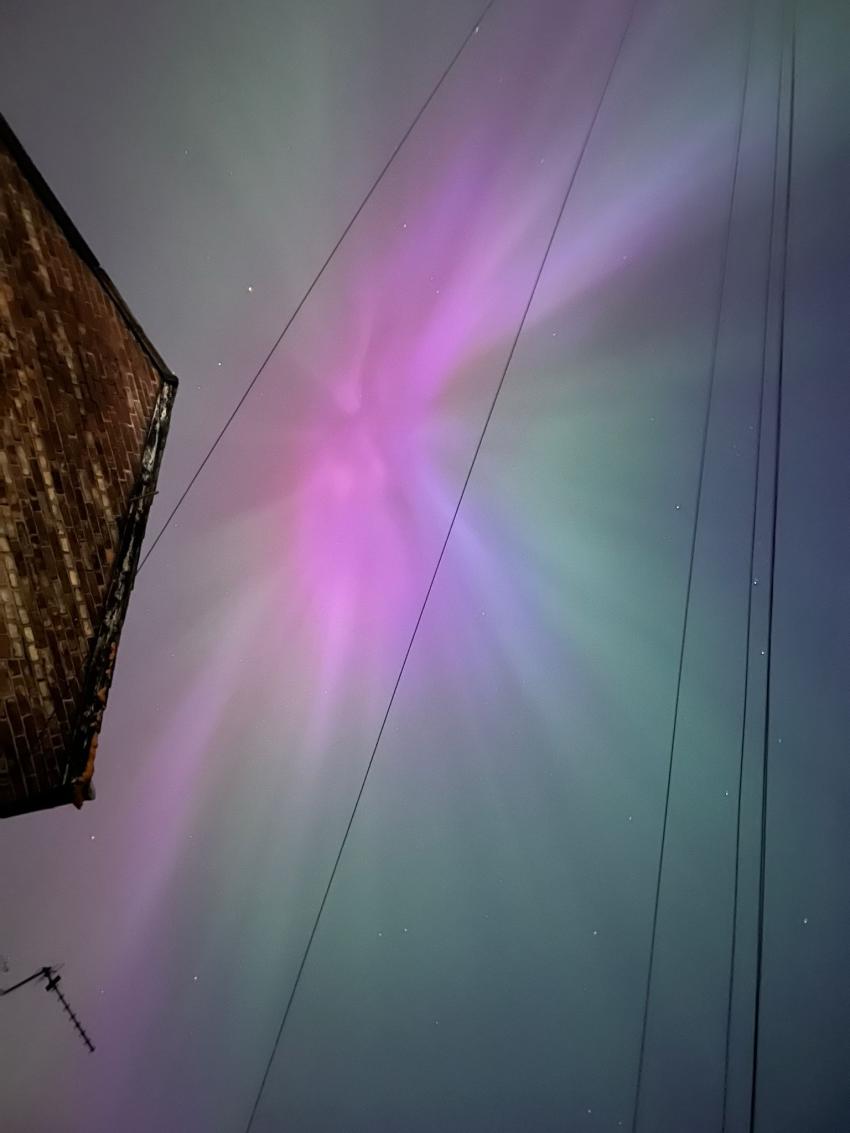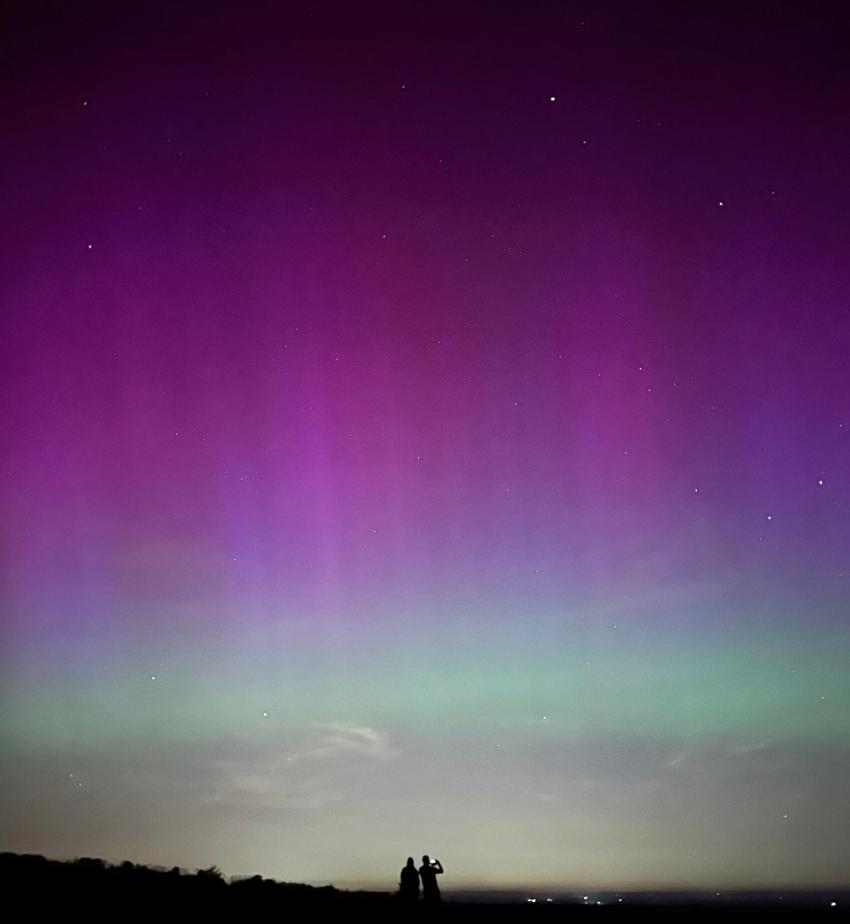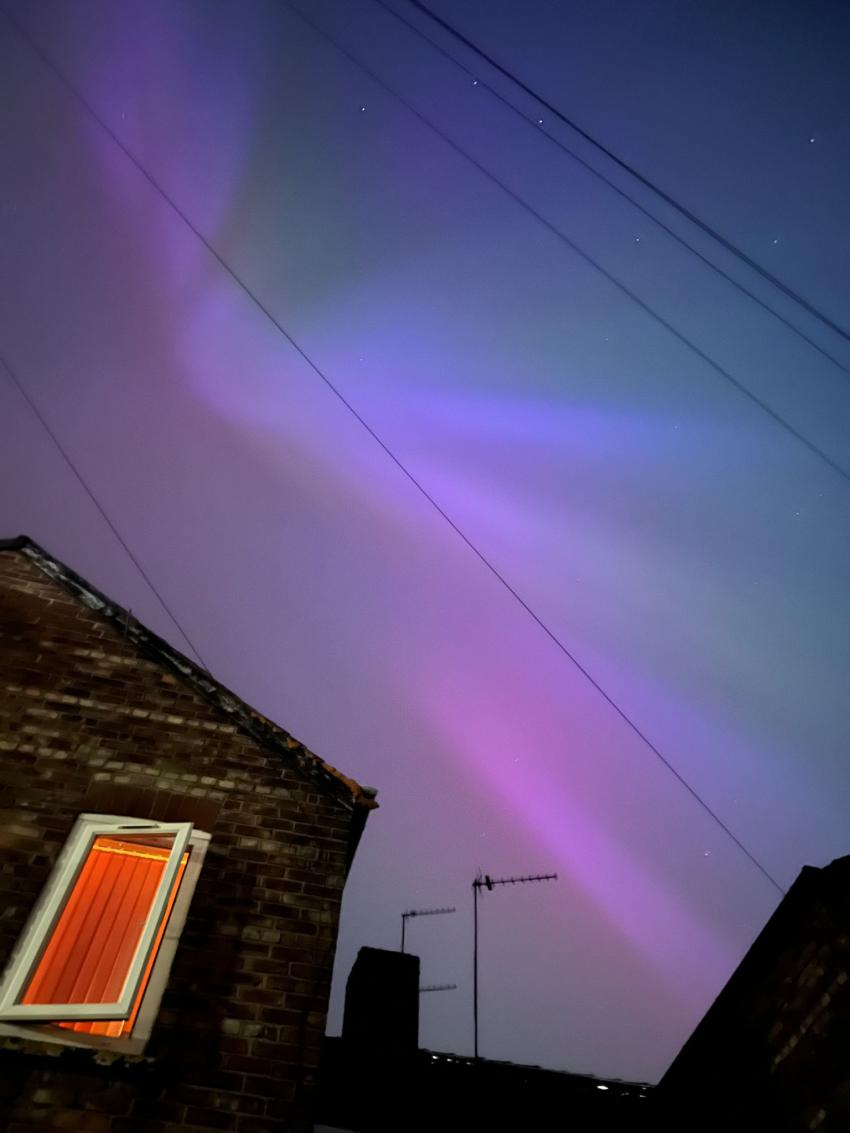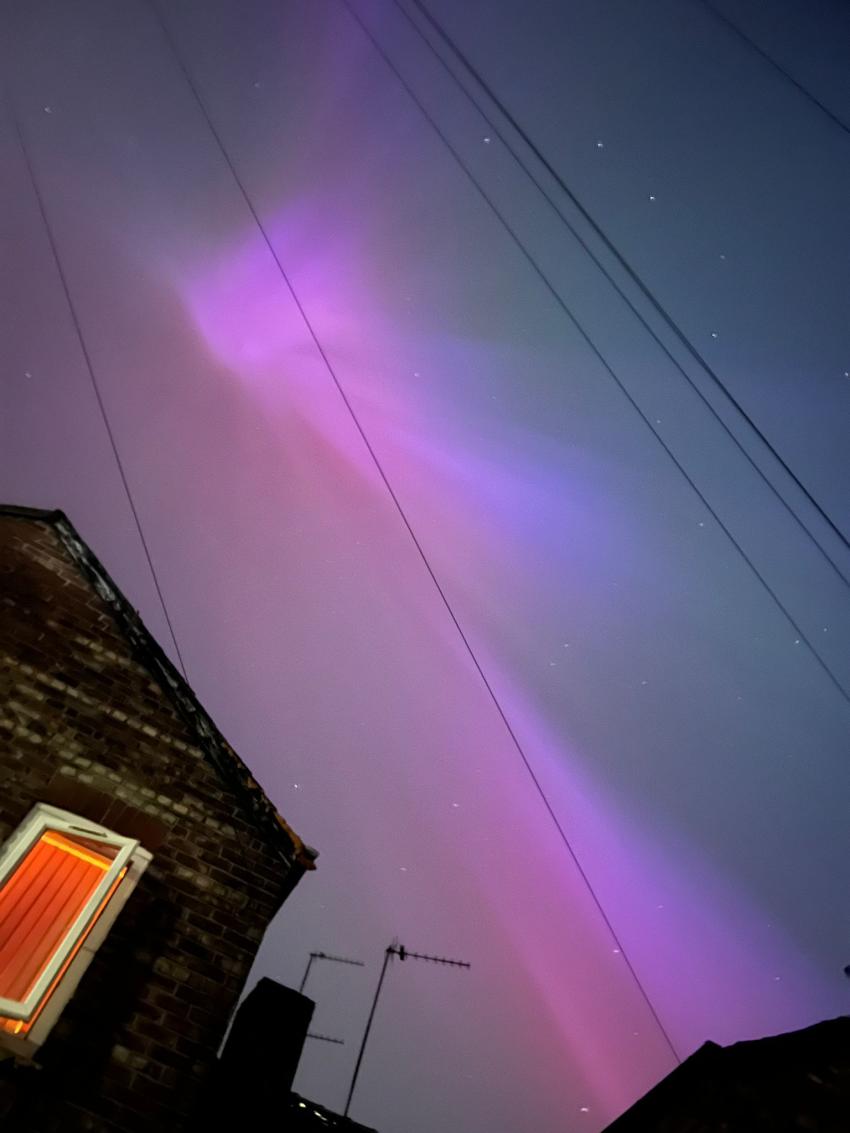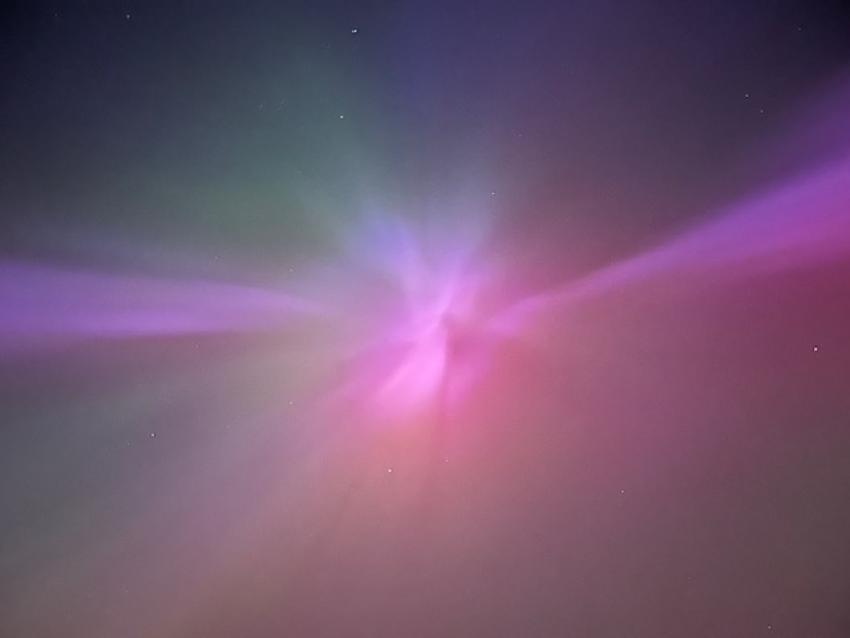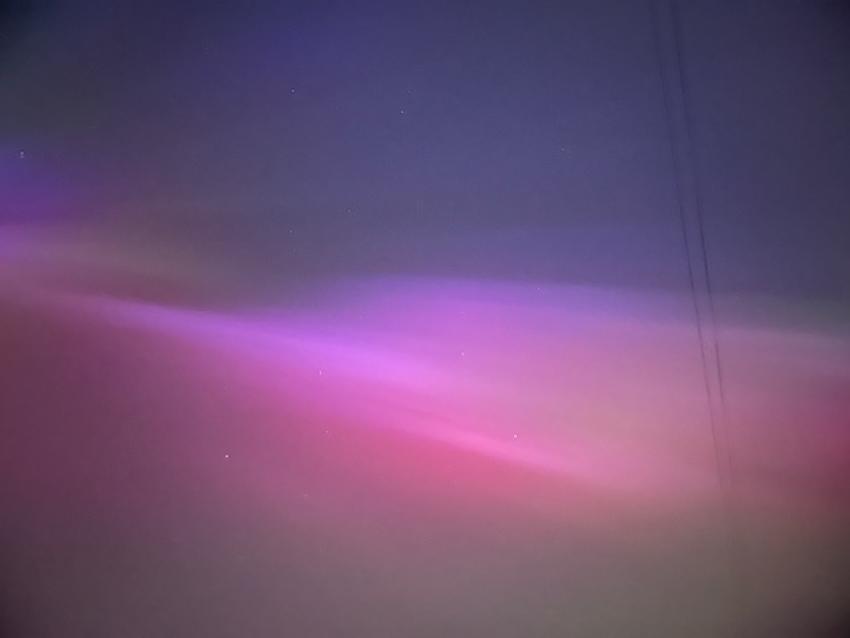People across the UK got a spectacular and surprise view of the Northern Lights last Friday, as the most extreme geomagnetic storm in two decades made the natural light show visible much further south than usual.
Stunning images of the lights - also known as aurora borealis - lit up phones, TVs and social media, while those who missed out tried in vain to catch a similar glimpse 24 hours later.
Although Saturday’s display failed to reach the same dizzying heights as the night before, that doesn’t mean all hope is lost for a repeat performance of the rare spectacle at some point over the next year.
That’s because the Sun is expected to reach the most active period in its 11-year solar cycle in 2024, making solar storms - and therefore the chance to see the Northern Lights - more likely.
Known as the solar maximum, this is when the Sun has more sunspots than usual because its magnetic field is becoming stronger and at its most complex, leading to the release of massive amounts of energy in the form of solar flares and, crucially for aurora, Coronal Mass Ejections (CMEs).
It means there is a higher chance than usual that the lights could again be visible to much of the UK - perhaps even as early as next month - although this is by no means guaranteed, as the Royal Astronomical Society’s new president Professor Mike Lockwood explains.
“The Sun is near sunspot maximum so it [seeing the Northern Lights further south] is much more likely than at other phases of the solar cycle - but it’s not a given for sure,” he said.
“The present storm was caused by about five coronal mass ejections launched from an exceptionally large sunspot group,” Professor Lockwood said.
“After this disturbance has died down there is a chance that the same ‘active region’ will still be emitting CMEs in 27 days when that region comes round to face the Earth again. But active regions tend to disperse so that is not highly likely.”
The reason we have to wait this long even though the sunspot region is still active is because, like Earth, the Sun also spins on its axis.
Generally speaking, our star rotates around once every 27 days - a discovery that was made by observing the motion of sunspots.
However, because it is a ball of gas the solar surface does not rotate as rigidly as solid planets, meaning its equatorial regions actually rotate faster (24 days) than its polar regions (30 days or more).
Paradoxically, however, the solar atmosphere, which is where CMEs are launched, does rotate more uniformly because it is dominated by the solar magnetic field.
In the time it takes for the solar atmosphere to make a full rotation, Earth moves on its orbit and so it takes about two days longer than the solar rotation period before the same part of the solar atmosphere is facing the Earth again.
Professor Lockwood cautioned that it was “hard to say” if there would be another chance to see the auroral lights so widely and vividly across the UK over the next year, partly because “there are so many factors that apply”, including the need for CMEs to be launched and in the direction to hit the Earth, the orientation of the magnetic field in interplanetary space when they arrive plus, of course, clear skies.
However, because of the solar maximum, there have already been more occasions than usual to observe a weak aurora in southern parts of the UK over the past year.
“Last weekend’s event generally comes around once a decade, so it’s brilliant that so many folk got the chance to see the wonder of the aurora,” Professor Lockwood said.
“There’s still a chance that people living further south might get another opportunity to witness the phenomenon, because of the Sun’s current period of activity, although it’s impossible to say with any certainty.
“The Sun has to throw out the CMEs and in the direction of Earth. But like throwing a six, the occurrence of one doesn't change the chance of another!
To repeat a spectacle like last weekend, there would also need to be enough of them to create a so-called cannibal CME, where the charged particles combine during their journey to Earth and spark an extreme geomagnetic storm classed as the highest G5.
Prior to Friday 10 May 2024, the last of these G5 storms to hit our planet happened in 2003 - so they’re very rare.
The science behind the colours
So just how do the Northern Lights get their ethereal glow?
Well, the natural phenomenon is caused by charged particles energised by energy extracted from the solar wind hitting gases in the Earth’s upper atmosphere (above about 100 km up). These gases are then energised, causing them to emit characteristic colours.
The two most abundant gases in the Earth’s atmosphere are nitrogen and oxygen.
Oxygen atoms glow green and red, but because the eye is more sensitive to green, this is the easiest colour to see in fainter displays. Nitrogen atoms, meanwhile, emit purple, blue and pink.
The aurora can commonly be seen near the poles of both the northern and southern hemispheres. In the north the display is known as the aurora borealis, and in the south it is called the aurora australis.
It is more often seen in winter when the nights are cold, long and dark.
Media contacts
Sam Tonkin
Royal Astronomical Society
Mob: +44 (0)7802 877700
Robert Massey
Royal Astronomical Society
Mob: +44 (0)7802 877699
Notes for editors
About the Royal Astronomical Society
The Royal Astronomical Society (RAS), founded in 1820, encourages and promotes the study of astronomy, solar-system science, geophysics and closely related branches of science.
The RAS organises scientific meetings, publishes international research and review journals, recognises outstanding achievements by the award of medals and prizes, maintains an extensive library, supports education through grants and outreach activities and represents UK astronomy nationally and internationally. Its more than 4,000 members (Fellows), a third based overseas, include scientific researchers in universities, observatories and laboratories as well as historians of astronomy and others.
The RAS accepts papers for its journals based on the principle of peer review, in which fellow experts on the editorial boards accept the paper as worth considering. The Society issues press releases based on a similar principle, but the organisations and scientists concerned have overall responsibility for their content.


